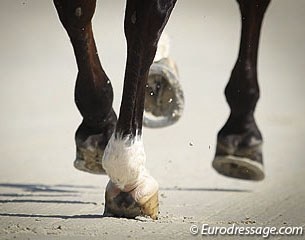
“Horse owners are poor at recognising lameness which may compromise equine welfare,” is the blunt message from the authors of a newly published research paper.
Sue Dyson headed up the study team, which applied a ridden horse ethogram to 60 horses in regular work, ridden by their usual riders and assumed by their owners to be working comfortably.
An ethogram is simply a catalogue of different kinds of behaviours observed in an animal, each with strict definitions. The ethogram used in this study was developed to facilitate identification of musculoskeletal pain in the ridden horse and comprises 24 behaviours, the majority of which are at least 10 times more likely to be seen in a lame horse compared with a non-lame horse. Previous research has demonstrated that 8 or more of these specific behaviours is likely to be a reflection of pain. In addition to the application of the ethogram, the presence of increased back muscle tension or pain, poor saddle fit, gait abnormalities and rider skill were assessed by independent experts.
The results showed that a disturbingly high proportion (73%) of the horses were lame and had significantly higher ethogram scores than non-lame horses. An interesting feature was that 47% of the horses had gait abnormalities in canter, highlighting the importance of evaluating the quality of canter, which may be compromised by hindlimb lameness or sacroiliac joint region pain.
It was clear that riders, irrespective of their skill level and experience, had a lack of recognition of the behavioural signs which may reflect musculoskeletal pain. Many riders learn to ride on horses which exhibit these signs, so there is a generalised acceptance that these behaviours are normal for horses. The ethogram provides a simple method of determining the likely presence of musculoskeletal pain, with the current study providing further evidence of the strong association between an ethogram score of 8 or more and the presence of lameness.
The take-home message from this important work is that education about what constitutes abnormal behaviours is needed, so that lame horses are recognised and undergo appropriate investigation and treatment, in order to both enhance equine welfare and improve performance.